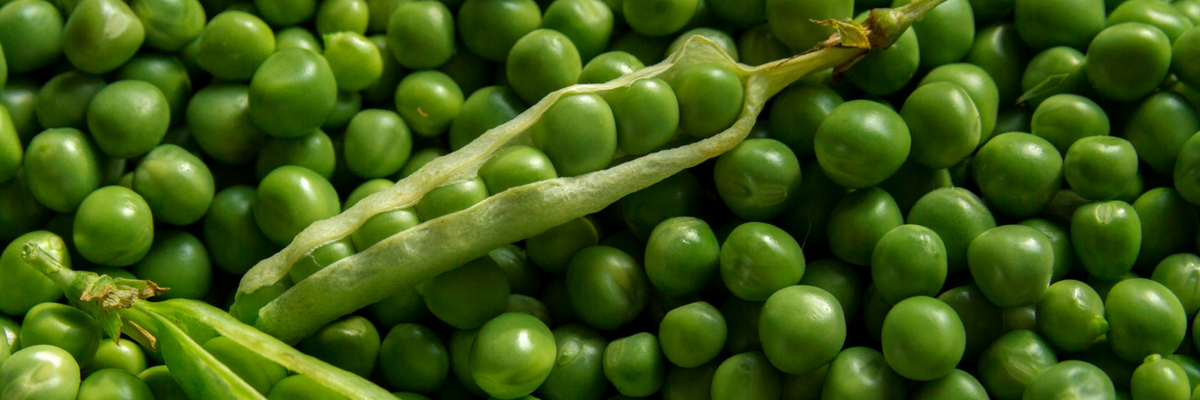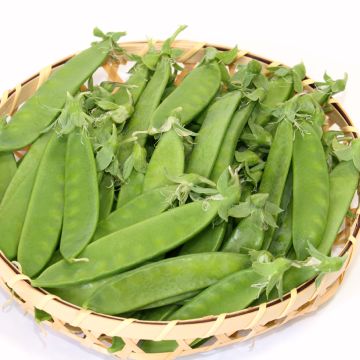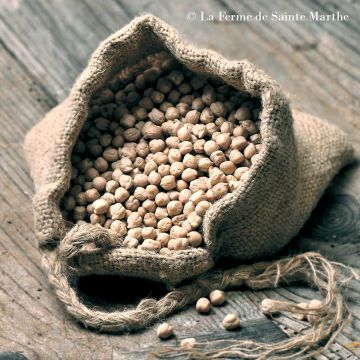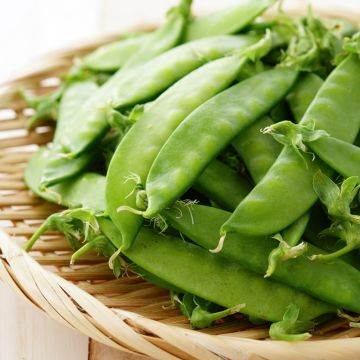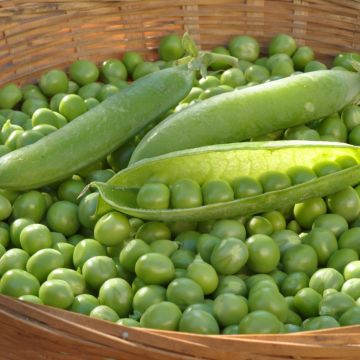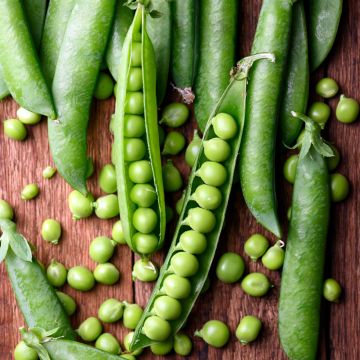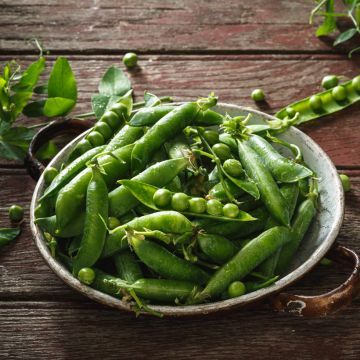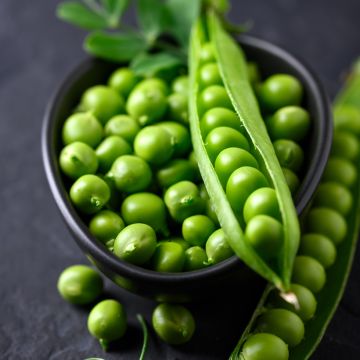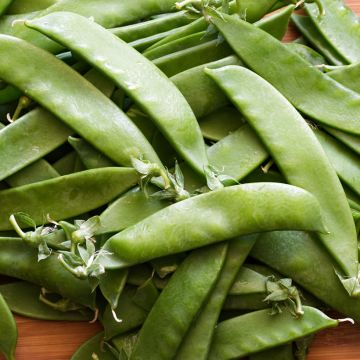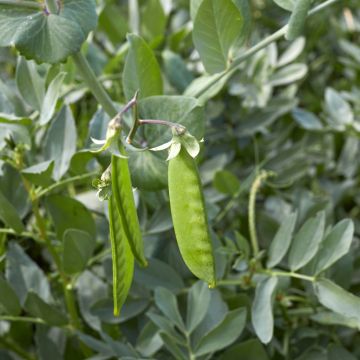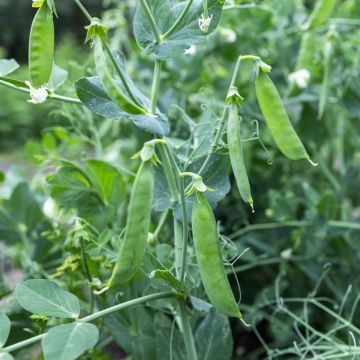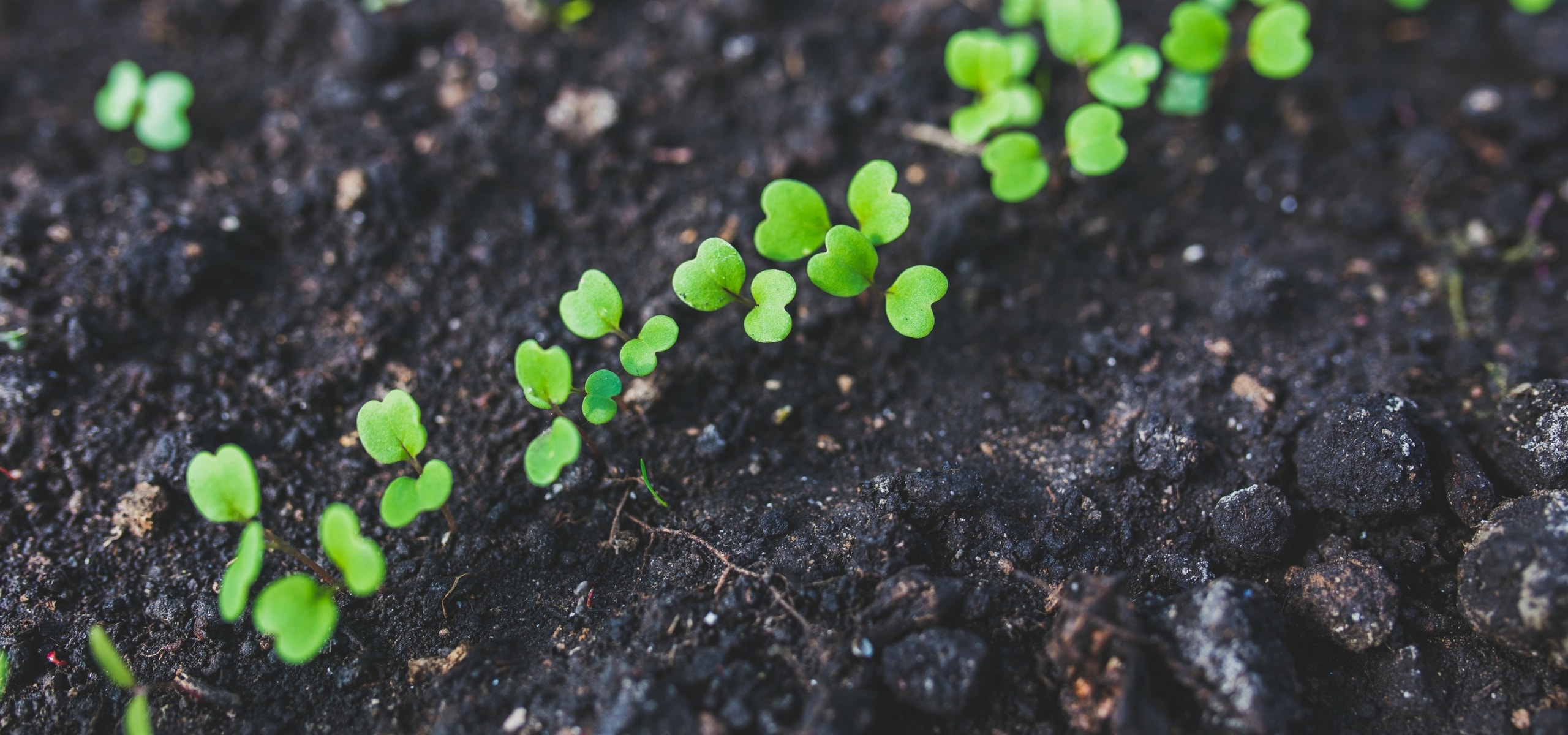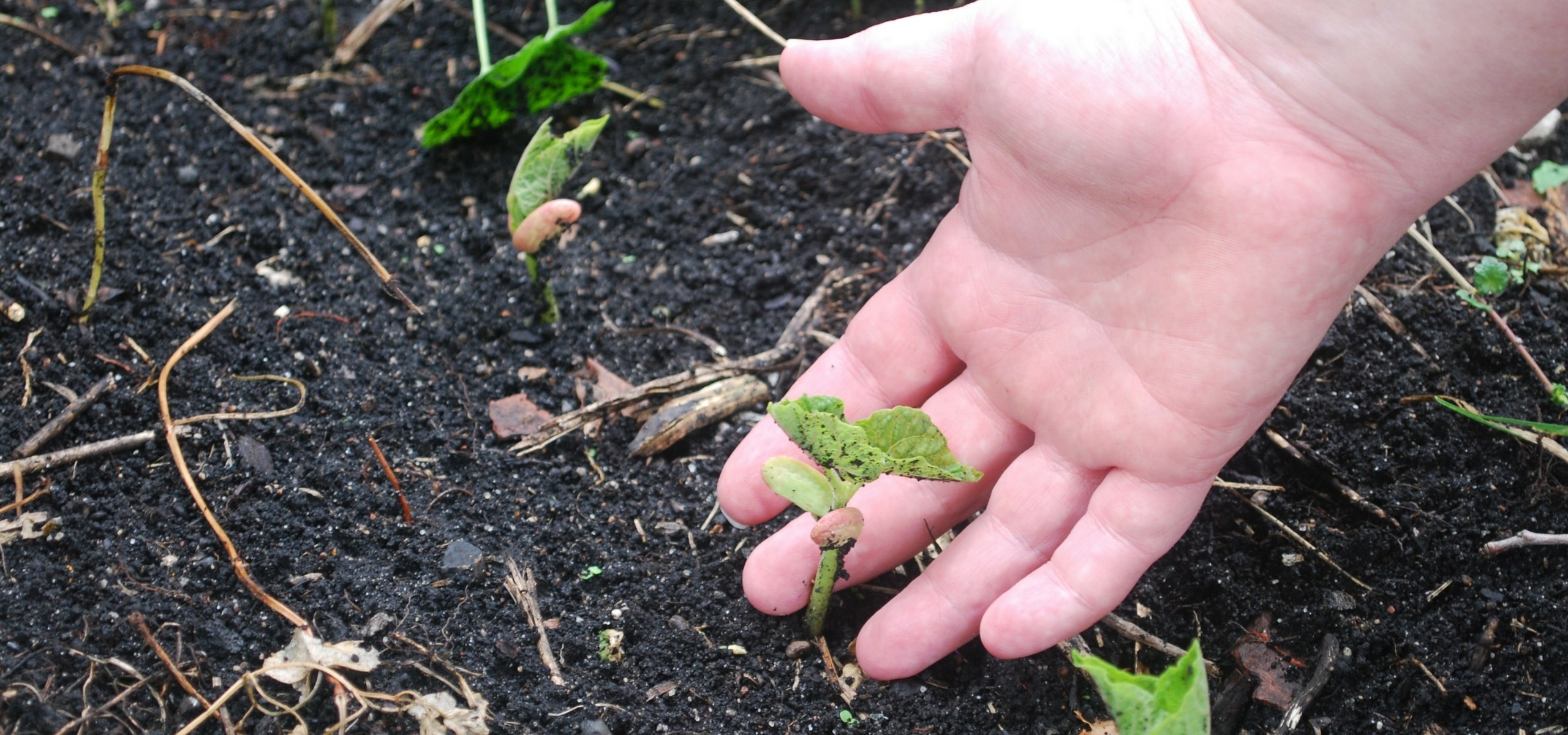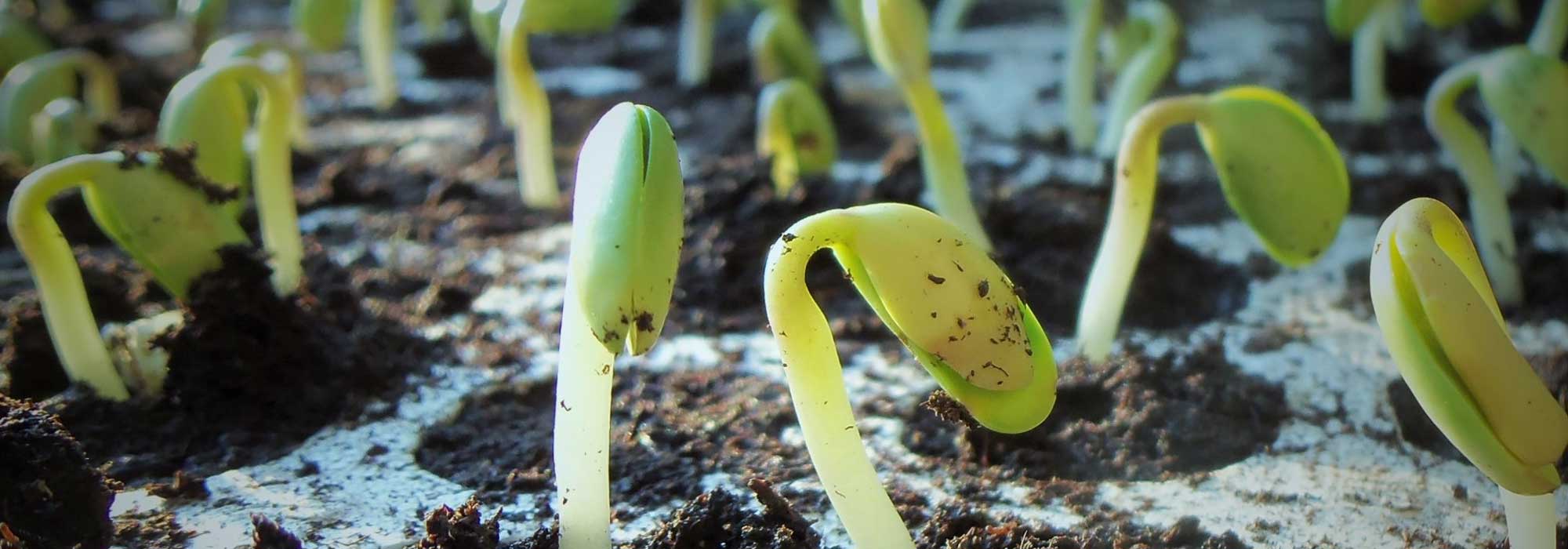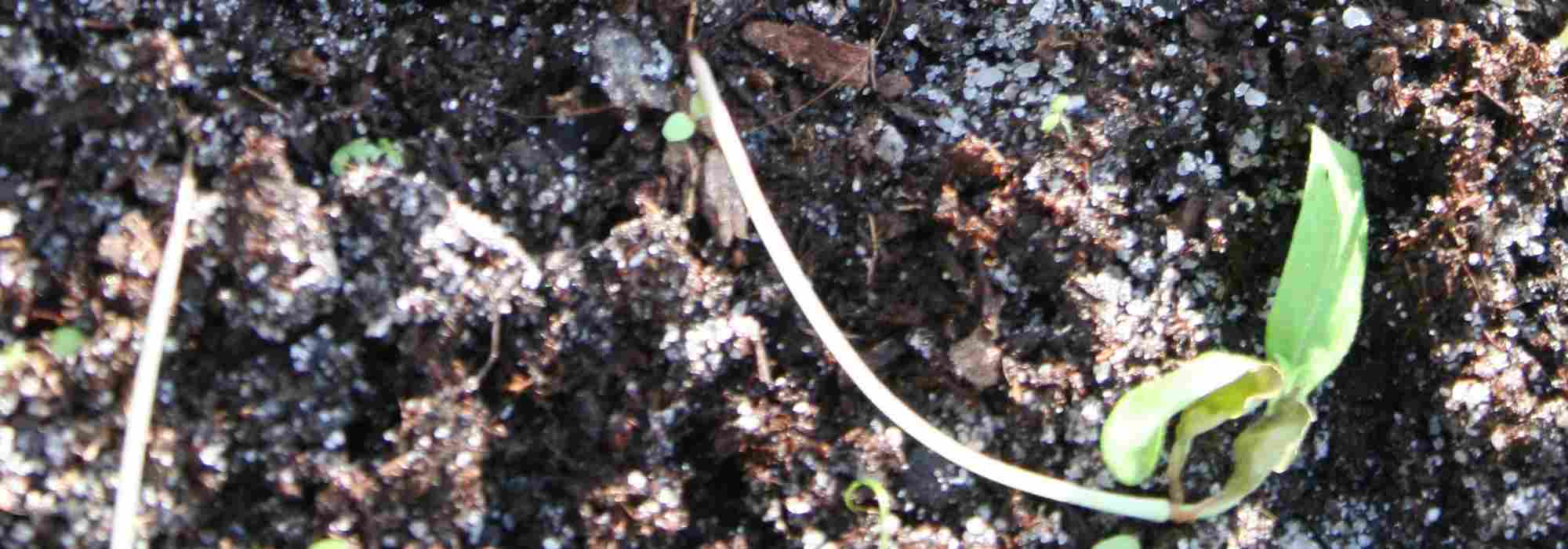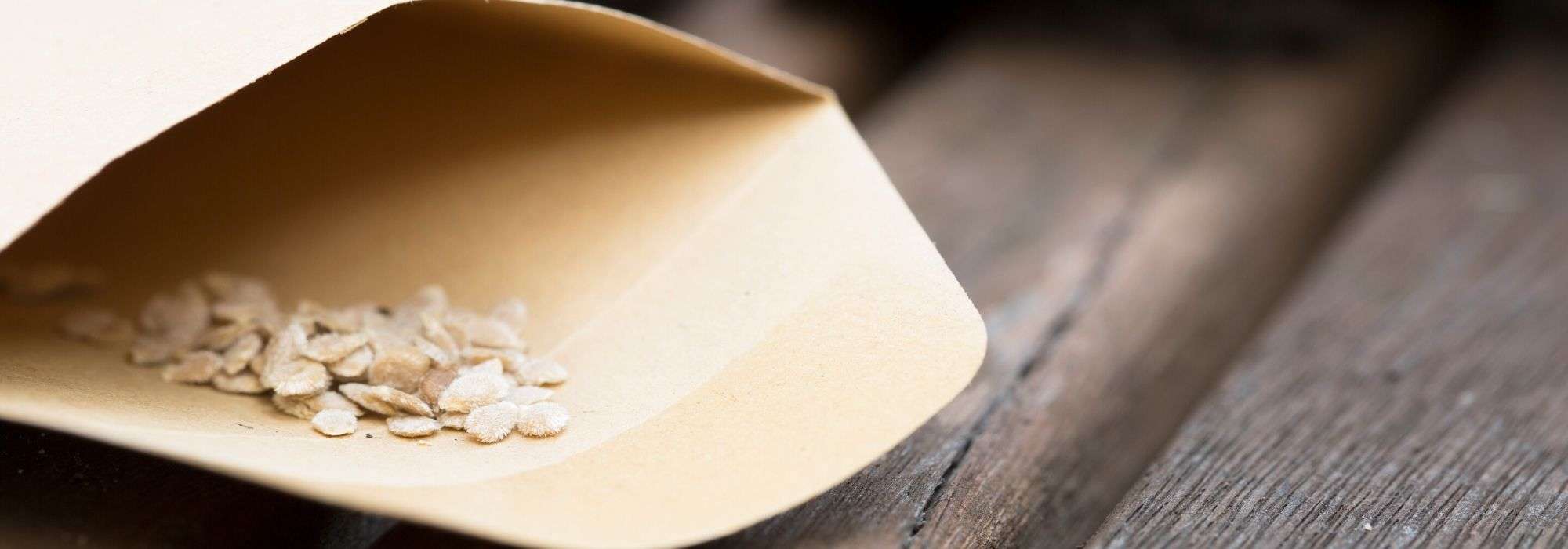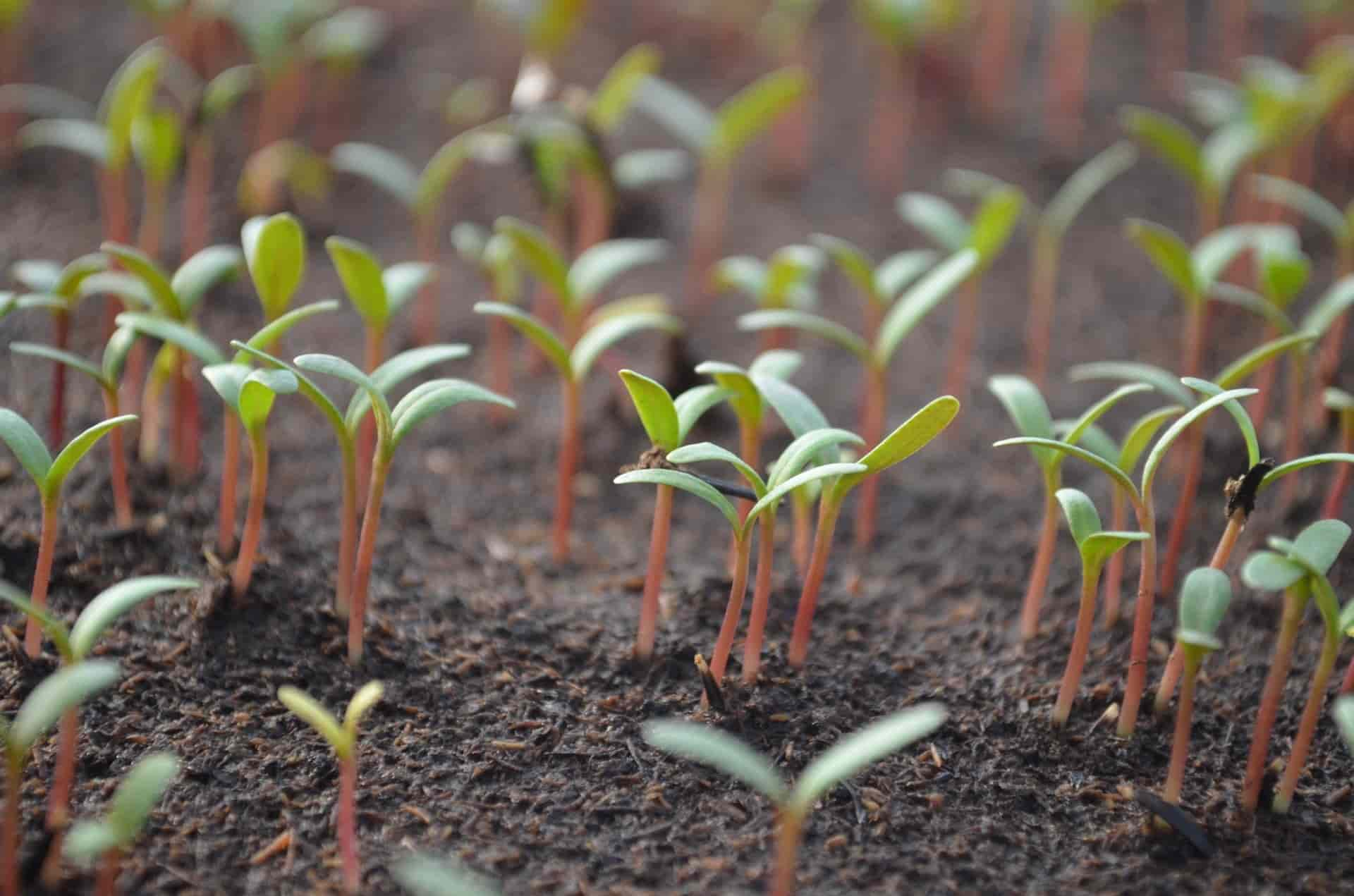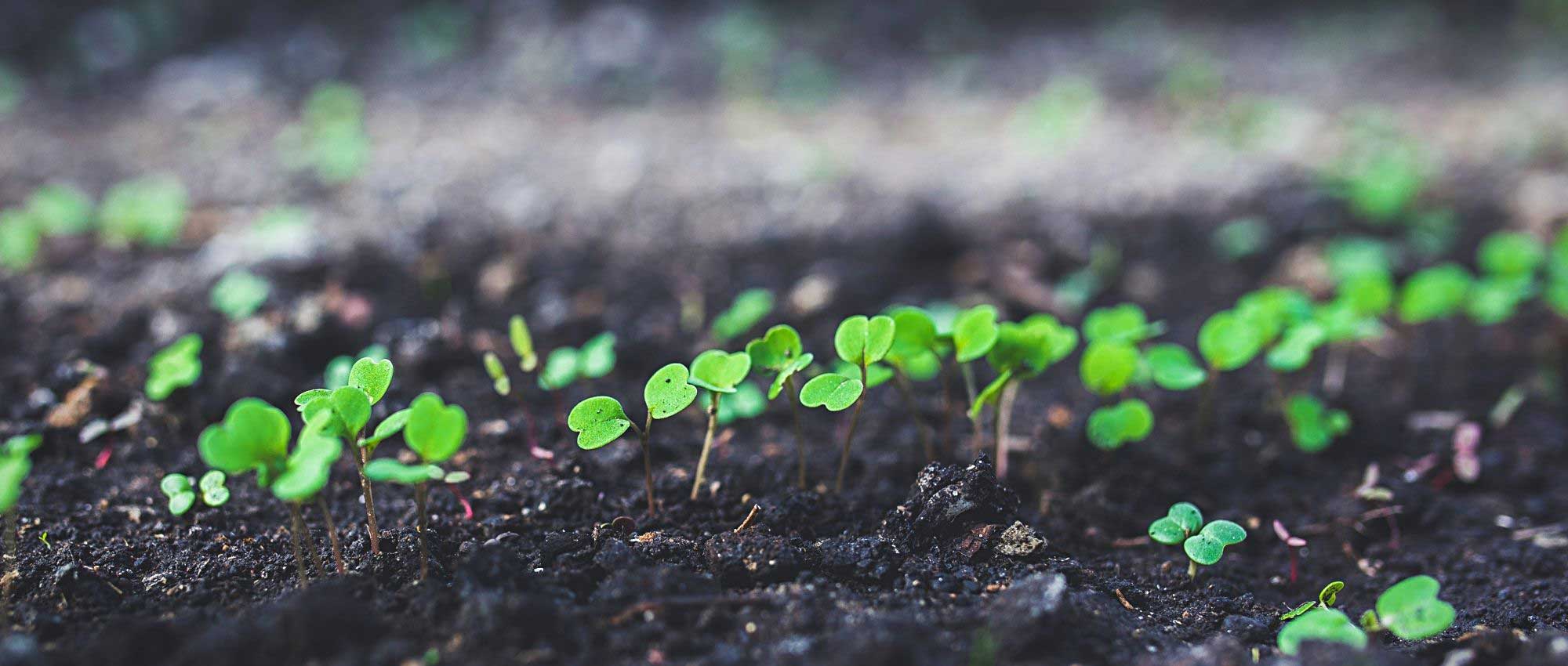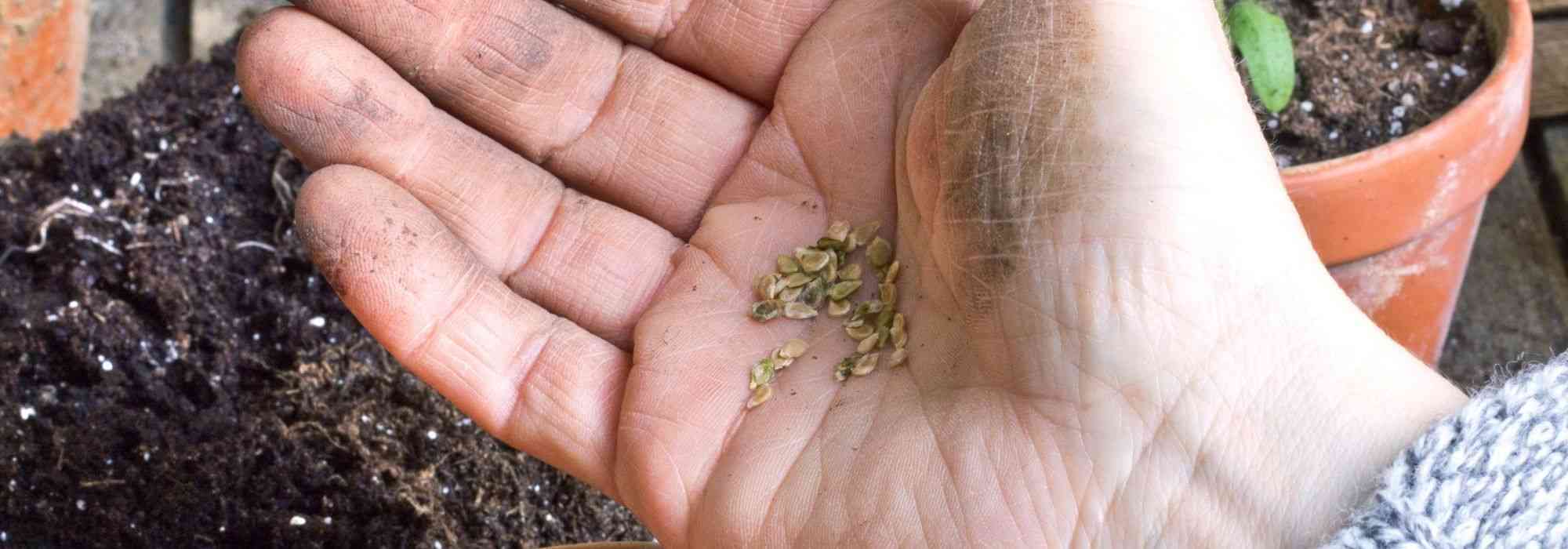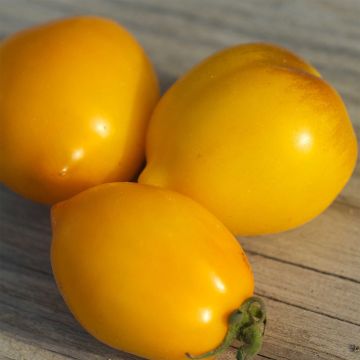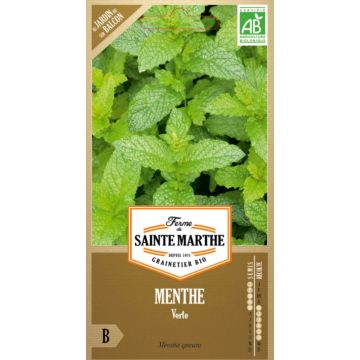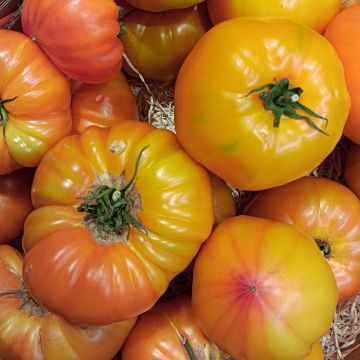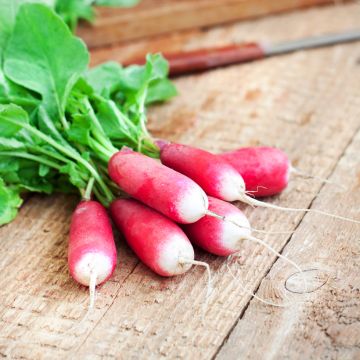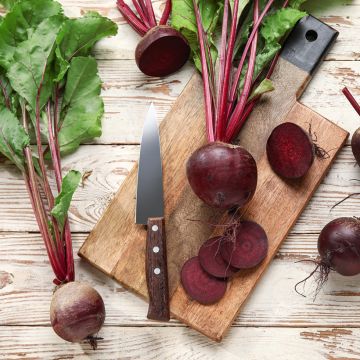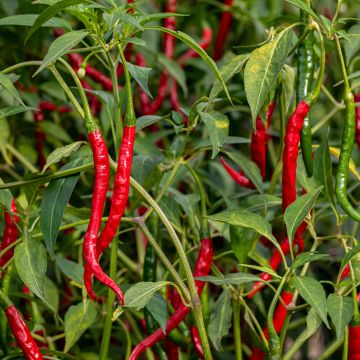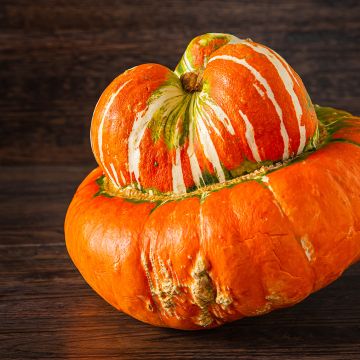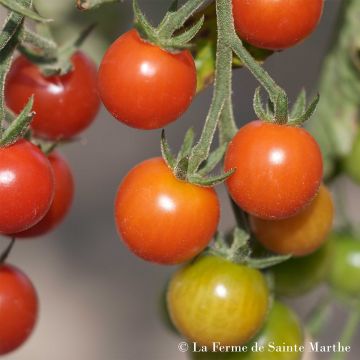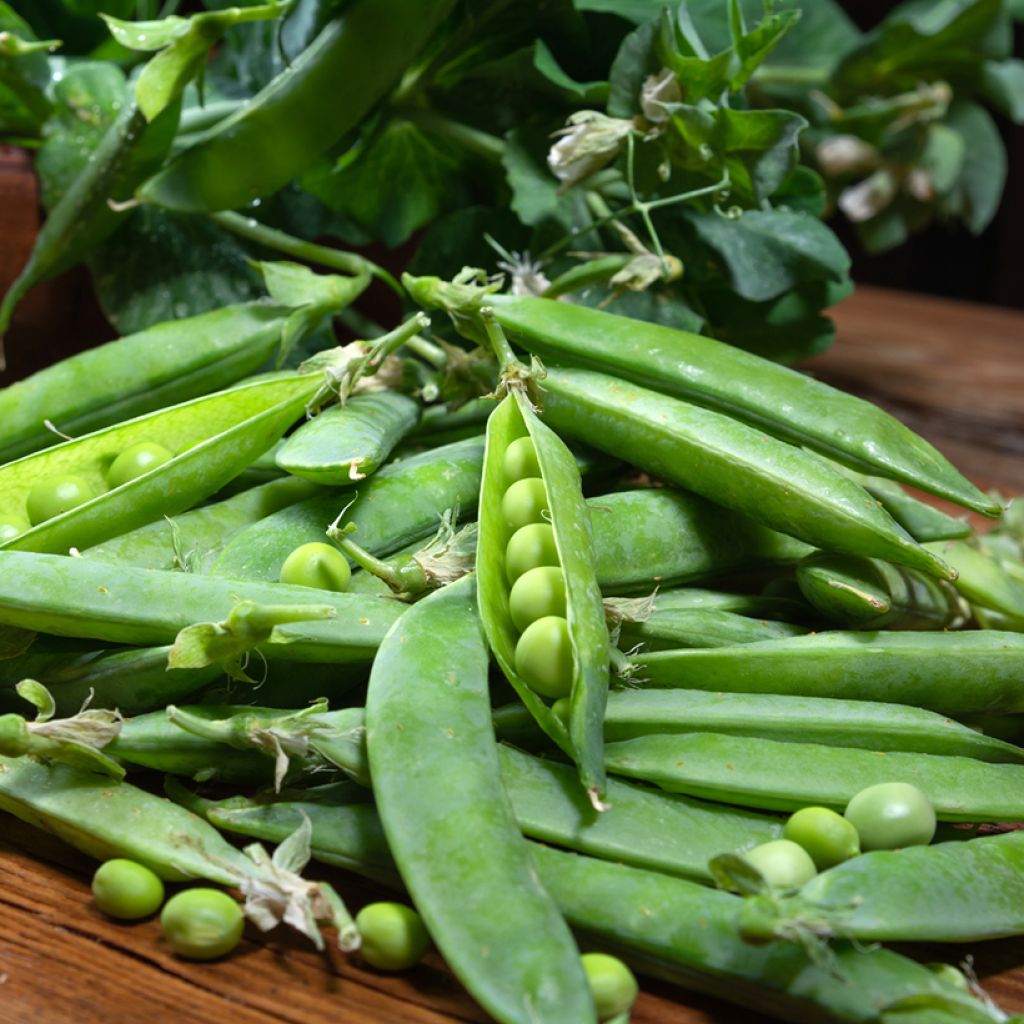

Pea Douce Provence organic seeds
Pea Douce Provence organic seeds
Pisum sativum Douce Provence
Garden pea, Green pea, English pea
Special offer!
Receive a €20 voucher for any order over €90 (excluding delivery costs, credit notes, and plastic-free options)!
1- Add your favorite plants to your cart.
2- Once you have reached €90, confirm your order (you can even choose the delivery date!).
3- As soon as your order is shipped, you will receive an email containing your voucher code, valid for 3 months (90 days).
Your voucher is unique and can only be used once, for any order with a minimum value of €20, excluding delivery costs.
Can be combined with other current offers, non-divisible and non-refundable.
Home or relay delivery (depending on size and destination)
Schedule delivery date,
and select date in basket
This plant carries a 6 months recovery warranty
More information
We guarantee the quality of our plants for a full growing cycle, and will replace at our expense any plant that fails to recover under normal climatic and planting conditions.
Description
The organic Douce Provence Dwarf Pea is an old French variety prized for its earliness and cold resistance, ideal for early sowings. This compact plant, reaching about 50 cm in height, offers a good yield. It produces straight pods containing 7 to 9 sweet and smooth peas of a beautiful bright green. This versatile pea can be consumed fresh, canned, or frozen. It can be sown from February to April for a summer harvest, or in October-November in regions with a mild climate for a spring harvest.
The organic pea (Pisum sativum) is an annual vegetable plant belonging to the Fabaceae family (formerly Leguminosae), originating from the Middle East. Cultivated for millennia in Europe and Asia, it is among the first domesticated vegetables. Historically consumed dry and crushed before cooking, its use in fresh form is relatively recent.
There is a wide diversity of peas, whether dwarf or climbing (pole), producing pods containing round, smooth, or wrinkled grains. Shelled peas require removing the parchment-like pod, which is not edible, while varieties like sugar snap peas are consumed entirely due to their flat and crunchy pods.
Climbing peas, such as 'King of Canning', although more productive, require 1.5 to 2 metre supports for their growth and are generally less early. Their harvest remains easy. On the other hand, dwarf or semi-dwarf peas, reaching between 50 cm and 1 metre in height, require little support, sometimes none for modern varieties with self-supporting tendrils.
Smooth-grained peas are suitable for early sowings as they withstand spring coolness well but tolerate summer heat poorly. Sweeter wrinkled pea varieties are better suited for late sowings, offering extended harvests during hot months.
Depending on the varieties, peas can be harvested between 2.5 and 4 months after sowing, usually from June to September. Regular picking is essential, pods should be picked when full and still tender. With age, the peas become harder.
In the kitchen, peas, although they can be consumed raw, are often cooked to accompany meats, fish, or soups. Rich in carbohydrates, fibre and iron, as well as vitamins C and B9, it is a nutritious and slightly calorific vegetable.
Cultivation-wise, peas prefer mild and humid climates. They are sensitive to extremes, such as excessive heat, frosts, or poor water management, which can promote diseases like powdery mildew or pest attacks like the pea moth.
For storage: fresh peas can be kept unshelled in the vegetable drawer of the refrigerator or can be frozen after a quick blanching.
Finally, a benefit of peas lies in their ability to fix nitrogen from the air in the soil, thus enriching the ground for neighbouring or subsequent crops in a crop rotation. In this way, they act as a true natural green fertiliser, beneficial for the vegetable garden.
Harvest
Plant habit
Foliage
Botanical data
Pisum
sativum
Douce Provence
Fabaceae
Garden pea, Green pea, English pea
Cultivar or hybrid
Annual
Other Pea seeds
View all →Planting and care
Sowing Dwarf Pea Douce Provence:
Before sowing, you can soak the seeds for 24 hours in a little water to stimulate germination.
For wrinkled seed varieties, you can sow from mid-March to late May, when the temperature is 7 to 10°C at night, and 18 to 23°C during the day.
For smooth seed varieties, you can sow in autumn around October-November for an early harvest in April, or sow around mid-February to late April for a summer harvest. Even though this variety can germinate in cold weather, it is advisable to protect the sowings with a forcing net that will create a favourable microclimate for homogeneous germination and protect the young plants from birds.
Using a hoe, open furrows 2 to 3 cm deep spaced 70 cm apart for this climbing pea variety. Space the seeds 2 cm apart, cover, firm with the back of a rake, and water lightly. Do not thin out.
Watering
A few days after germination, hoe the soil along the rows. Water with a watering can fitted with a rose to avoid compacting the soil.
Once the plants are established, mulch the soil after a rainy period.
Do not let the soil dry out, as peas appreciate moisture. They need regular moisture from sowing to flowering, and then to pod formation. In water stress, production is affected. Flowers drop and pods fail to ripen. Similarly, in case of excess water, flowers fall. Maintaining this moisture helps limit thrips infestations.
Maintenance
Three to four weeks after seed germination, carefully earth up the base of the stems about 10 cm deep to promote better rooting. Then set up the support, branched sticks (willow, hazel, privet...), net or trellis, even for dwarf varieties so they do not collapse. Make them taller or shorter depending on the variety; climbing peas can reach up to 2 m.
Seedlings
Care
Intended location
Planting & care advice
This item has not been reviewed yet - be the first to leave a review about it.
Similar products
Haven't found what you were looking for?
Hardiness is the lowest winter temperature a plant can endure without suffering serious damage or even dying. However, hardiness is affected by location (a sheltered area, such as a patio), protection (winter cover) and soil type (hardiness is improved by well-drained soil).

Photo Sharing Terms & Conditions
In order to encourage gardeners to interact and share their experiences, Promesse de fleurs offers various media enabling content to be uploaded onto its Site - in particular via the ‘Photo sharing’ module.
The User agrees to refrain from:
- Posting any content that is illegal, prejudicial, insulting, racist, inciteful to hatred, revisionist, contrary to public decency, that infringes on privacy or on the privacy rights of third parties, in particular the publicity rights of persons and goods, intellectual property rights, or the right to privacy.
- Submitting content on behalf of a third party;
- Impersonate the identity of a third party and/or publish any personal information about a third party;
In general, the User undertakes to refrain from any unethical behaviour.
All Content (in particular text, comments, files, images, photos, videos, creative works, etc.), which may be subject to property or intellectual property rights, image or other private rights, shall remain the property of the User, subject to the limited rights granted by the terms of the licence granted by Promesse de fleurs as stated below. Users are at liberty to publish or not to publish such Content on the Site, notably via the ‘Photo Sharing’ facility, and accept that this Content shall be made public and freely accessible, notably on the Internet.
Users further acknowledge, undertake to have ,and guarantee that they hold all necessary rights and permissions to publish such material on the Site, in particular with regard to the legislation in force pertaining to any privacy, property, intellectual property, image, or contractual rights, or rights of any other nature. By publishing such Content on the Site, Users acknowledge accepting full liability as publishers of the Content within the meaning of the law, and grant Promesse de fleurs, free of charge, an inclusive, worldwide licence for the said Content for the entire duration of its publication, including all reproduction, representation, up/downloading, displaying, performing, transmission, and storage rights.
Users also grant permission for their name to be linked to the Content and accept that this link may not always be made available.
By engaging in posting material, Users consent to their Content becoming automatically accessible on the Internet, in particular on other sites and/or blogs and/or web pages of the Promesse de fleurs site, including in particular social pages and the Promesse de fleurs catalogue.
Users may secure the removal of entrusted content free of charge by issuing a simple request via our contact form.
The flowering period indicated on our website applies to countries and regions located in USDA zone 8 (France, the United Kingdom, Ireland, the Netherlands, etc.)
It will vary according to where you live:
- In zones 9 to 10 (Italy, Spain, Greece, etc.), flowering will occur about 2 to 4 weeks earlier.
- In zones 6 to 7 (Germany, Poland, Slovenia, and lower mountainous regions), flowering will be delayed by 2 to 3 weeks.
- In zone 5 (Central Europe, Scandinavia), blooming will be delayed by 3 to 5 weeks.
In temperate climates, pruning of spring-flowering shrubs (forsythia, spireas, etc.) should be done just after flowering.
Pruning of summer-flowering shrubs (Indian Lilac, Perovskia, etc.) can be done in winter or spring.
In cold regions as well as with frost-sensitive plants, avoid pruning too early when severe frosts may still occur.
The planting period indicated on our website applies to countries and regions located in USDA zone 8 (France, United Kingdom, Ireland, Netherlands).
It will vary according to where you live:
- In Mediterranean zones (Marseille, Madrid, Milan, etc.), autumn and winter are the best planting periods.
- In continental zones (Strasbourg, Munich, Vienna, etc.), delay planting by 2 to 3 weeks in spring and bring it forward by 2 to 4 weeks in autumn.
- In mountainous regions (the Alps, Pyrenees, Carpathians, etc.), it is best to plant in late spring (May-June) or late summer (August-September).
The harvesting period indicated on our website applies to countries and regions in USDA zone 8 (France, England, Ireland, the Netherlands).
In colder areas (Scandinavia, Poland, Austria...) fruit and vegetable harvests are likely to be delayed by 3-4 weeks.
In warmer areas (Italy, Spain, Greece, etc.), harvesting will probably take place earlier, depending on weather conditions.
The sowing periods indicated on our website apply to countries and regions within USDA Zone 8 (France, UK, Ireland, Netherlands).
In colder areas (Scandinavia, Poland, Austria...), delay any outdoor sowing by 3-4 weeks, or sow under glass.
In warmer climes (Italy, Spain, Greece, etc.), bring outdoor sowing forward by a few weeks.






























